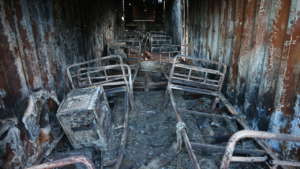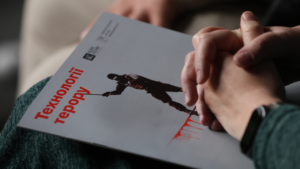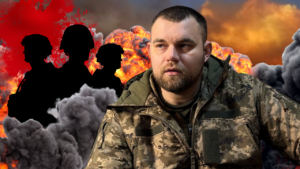At Least 707 Attacks on Health Care in Ukraine During One Year of Russia’s Assault on Civilians: Report

Landmark investigation documents Russia’s brutal violence against Ukrainian hospitals and health workers, pointing to likely war crimes and potential crimes against humanity
707 violent attacks on hospitals, health workers, and other medical infrastructure devastated Ukraine’s health system during the first year since the Russian Federation’s full-scale invasion, according to a new investigation published today by human rights investigators. An average of two attacks on health care – including the bombing of hospitals, torture of medics, and shooting at ambulances – were perpetrated each day from February 24-December 31, 2022.
The new report (Destruction and Devastation: One Year of Russia’s Assault on Ukraine’s Health Care System) documents how Russia appears to have both deliberately and indiscriminately targeted Ukraine’s health system as part of a broader attack on Ukraine’s civilian population and infrastructure.
The report shows that there is a reasonable basis to believe that the documented attacks constitute war crimes and comprise a course of conduct that could potentially constitute crimes against humanity as well. The research was conducted jointly by eyeWitness to Atrocities, Insecurity Insight (II), Media Initiative for Human Rights (MIHR), Physicians for Human Rights (PHR), and the Ukrainian Healthcare Center (UHC).
The report breaks new ground as the most comprehensive documentation to date of attacks on Ukraine’s health care system. The investigation draws on a new dataset and interactive map of attacks – developed from open-source and confidential information gathered over 2022 – supplemented by 10 detailed case studies based on research visits to hospitals across Ukraine to inspect attack sites, assess damage, take photographs, and conduct semi-structured interviews with survivors and witnesses.

“Our report illustrates the staggering toll that Russia’s war of aggression has had on Ukraine’s doctors, nurses, and patients. The research shows that Russian armed forces have bombed hospitals, tortured medics, attacked ambulances, and looted clinics. Based on the findings of our investigation, evidence strongly suggests these acts constitute war crimes and a course of conduct that could potentially constitute crimes against humanity as well. As we mark one year since Russia’s full-scale invasion of Ukraine – and with imminent threats of further violence against health care amid Russia’s latest offensive – prosecutors must urgently investigate these attacks and hold perpetrators to account,” said Christian De Vos, JD, PhD, report co-author and director of research and investigations at PHR.
Among the 707 total attacks on health care perpetrated from February 24-December 31, 2022, researchers documented both targeted and indiscriminate attacks on Ukraine’s health system. The numbers shown on the map and presented in the dataset provide a minimum estimate of the conflict-related damage to the health care system in Ukraine in 2022; however, they are likely an undercount.
Key findings include:
- 292 attacks that damaged or destroyed 218 hospitals and clinics
- 65 attacks on ambulances
- 181 attacks on other health infrastructure, such as pharmacies, blood centers, and dental clinics
- 86 attacks on health care workers, with 62 health workers killed and 52 injured. Many other health workers were threatened, imprisoned, taken hostage, and forced to work under Russian occupation
- Nearly one in 10 of Ukraine’s hospitals have been directly damaged from attacks, with the heaviest destruction in the eastern oblasts (provinces) of Kharkivska, Donetska, Luhanska, as well as Khersonska and Kyivska
- In Mariupol, in the southern part of Donetska oblast, almost eight out of 10 points of health care service provision were either damaged or destroyed
- In 10 oblasts (provinces), 48 hospitals were hit multiple times, underscoring not only the indiscriminate nature of attacks but also the possibility that they were deliberately targeted

“They saw very well, they knew that this was a medical institution,” Dr. Alla Barsehian, director of Bashtanka Multiprofile Hospital, told researchers. The hospital was heavily damaged in an April 2022 attack despite being marked with a Red Cross painted on a canvas on the hospital’s roof. “We hoped this would somehow save us. But it turns out nothing is sacred in this war,” the doctor told Sky News.
The impacts of these 707 attacks on the health and wellbeing of Ukrainians are devastating and far-reaching, resulting in the denial of access to medical care, reduced vaccination rates, barriers to managing chronic diseases, and severe mental health tolls. While the full extent of the damage to Ukraine’s public health remains to be seen, at least one in every three Ukrainians lacked access to medical services as of December 2022, according to a survey by the International Organization for Migration.
“Russia’s brutal strategy is deliberately merging civilian and military targets in war. For them, destroying hospitals, schools, and the power grid is a way to achieve military aims. Russia used this murderous tactic before, in Chechnya and Syria, but faced no accountability. If impunity doesn’t end now, we will see many more hospitals destroyed as a means of war in the future. Unpunished evil always grows,” said Pavlo Kovtoniuk, report co-author and co-founder of the Ukrainian Healthcare Center (UHC).
Targeting functioning health care infrastructure and workers in an armed conflict and carrying out indiscriminate attacks that affect civilian infrastructure – including hospitals and clinics – constitute war crimes. The report offers detailed legal analysis that highlights pathways to accountability for these attacks under international criminal law, Ukrainian domestic law, and universal jurisdiction.
The report is launched alongside a new interactive map documenting attacks on health care in Ukraine. The map allows users to analyze patterns of violence affecting medical facilities, health workers, and infrastructure. The map is available at www.attacksonhealthukraine.org and will be continueously updated.

In addition to the dataset and map, the report highlights 10 detailed case studies on alleged attacks by Russian forces on Ukraine’s health care facilities, infrastructure, and workers, informed by site visits to hospitals around Ukraine and interviews with survivors, including:
- Multiple attacks on Izium Central City Hospital in Kharkivska oblast using large conventional artillery rounds and airstrikes attributed to Russian forces in March 2022. The hospital was marked with a Red Cross seen from the air (page 21)
- Repeated shelling in February-March 2022 of Makariv Multiprofile Intensive Care Hospital, Primary Care Clinic and private medical clinic, Kyivska oblast, disrupting health services (page 24)
- Cluster munitions launched at Chernihiv Regional Children’s Hospital, Chernihivska oblast, in March 2022, killing at least 14 people (page 27)
- Apparent cruise missile attack in April 2022 destroys 30-40 percent of the Bashtanka Multiprofile Hospital, Mykolaivska oblast, which had a Red Cross painted on the roof (page 30)
- Russian tanks fire on Trostianets City Hospital, Sumska oblast, in March 2022 amid occupation of city (page 33)
- Multiple rounds fired at an ambulance in Lyman, Donetska oblast, in April 2022 (page 37)
- The heavy looting and mutilation of Balakliia Clinical Multiprofile Intensive Care Hospital, Kharkivska oblast, in April 2022 (page 40)
- Providing health care during the Russian occupation of Kherson Regional Clinical Hospital, Khersonska oblast, (page 44)
- Providing health care under bombardment in Mariupol Regional Intensive Care Hospital, Donetska oblast, with health workers and patients held hostage (page 46)
- Providing health care in captivity at correctional colonies, Donetska oblast (page 49)

“Health care workers, who became witnesses, talk about the horrific crimes committed by Russia in Ukraine. Some were held hostage by the Russian military, others were under fire, and some were forced to work under occupation. Witnesses described these events with horror and tears in their eyes. It is worth emphasizing that these are just a few testimonies and only from those who survived. Witnesses share their stories to hold Russia accountable for its crimes,” said Lyubov Smachylo, analyst of the Media Initiative for Human Rights.
Russian armed forces have attacked health workers and facilities in past conflicts around the globe, including in Syria, Chechnya, and Georgia. To date, there have been no successful prosecutions or accountability for these flagrant violations of international law.
While violence against health care in conflict zones is a global phenomenon, Russia’s assault on Ukraine’s health system in 2022 stands out for its scale and brutality. At least 1892 attacks on health care in conflict were perpetrated in 2022, according to new figures released by the Safeguarding Health in Conflict Coalition (SHCC), a group of nongovernmental organizations working to protect health workers, services, and infrastructure. This includes 628 health facilities damaged, 215 health workers killed, and 287 health workers kidnapped across the world. More than a third of all reported attacks on health care globally in 2022 were perpetrated in Ukraine amid Russia’s invasion.
Protecting health care is a shared responsibility of all parties to an armed conflict. International humanitarian law (IHL), the body of law that applies to armed conflicts, sets out detailed rules that seek to protect health care from conflict-related violence, principally by limiting the means and method of warfare. Health care facilities, providers, and ambulances are further afforded special protection under IHL so as to mitigate the impact of conflict on their work and ensure the delivery of care to the sick and injured. Under IHL, parties to the conflict must protect civilians against dangers arising from military operations, and allow and facilitate rapid and unimpeded passage of humanitarian relief for civilians in need. Beyond protection, however, there is a pressing need to ensure accountability when IHL rules and principles are violated.
“It is a great concern that damage and destruction of the health system is common in so many conflicts around the world despite the fact that international humanitarian law protects access to health care,” said Christina Wille, director of Insecurity Insight. “We have been monitoring patterns of violence against healthcare in conflict for several years around the world, and never before have we seen such widespread damage and destruction to the health system from indiscriminate use of force. The frequent use of explosive weapons with wide area effects across cities of Ukraine causes unacceptable devastation to the whole health system with concerning consequences for access to health care.”

The report calls on investigators and prosecutors – in Ukraine, at the International Criminal Court, and in third countries that can act under the principle of “universal jurisdiction” – to prioritize these attacks and affirm that the laws protecting medical facilities and personnel be respected and enforced.
“The findings presented in the report urgently warrant further investigation by prosecutorial authorities. The 10 highly detailed case studies in particular provide compelling evidence for prosecutors – be they at the ICC, in Kyiv, or beyond – to pursue accountability for these heinous acts,” said Wendy Betts, director at eyeWitness to Atrocities.
The authors demand that Russia “cease these attacks and end its aggression. Russia is also obligated to make reparations for its breaches of international law, including compensating the Ukrainian state and individual Ukrainians – and other killed or injured nationals – for devastating loss of life and injury, extensive destruction, and the enormous costs of reconstruction, including to the health care system.”
The report also directs the global diplomatic community and United Nations agencies to take actions to protect health care and end impunity.
Full report (pdf)
Executive summary (pdf)
Interactive map (web)
Report on the PHR website (web)






